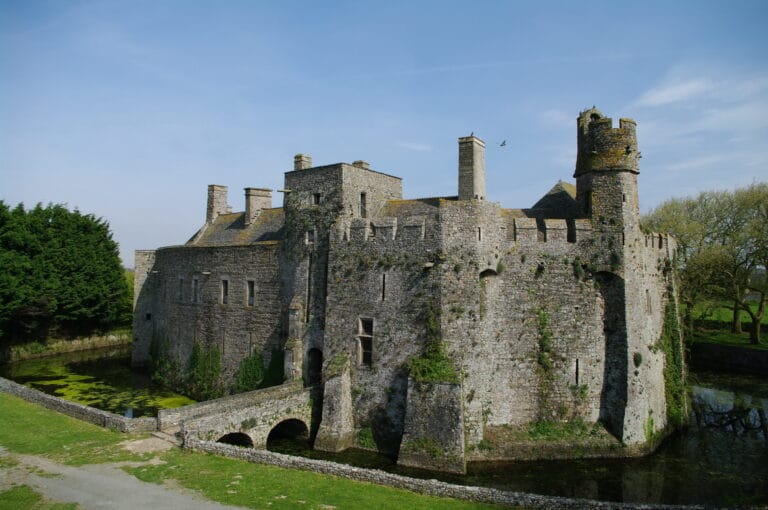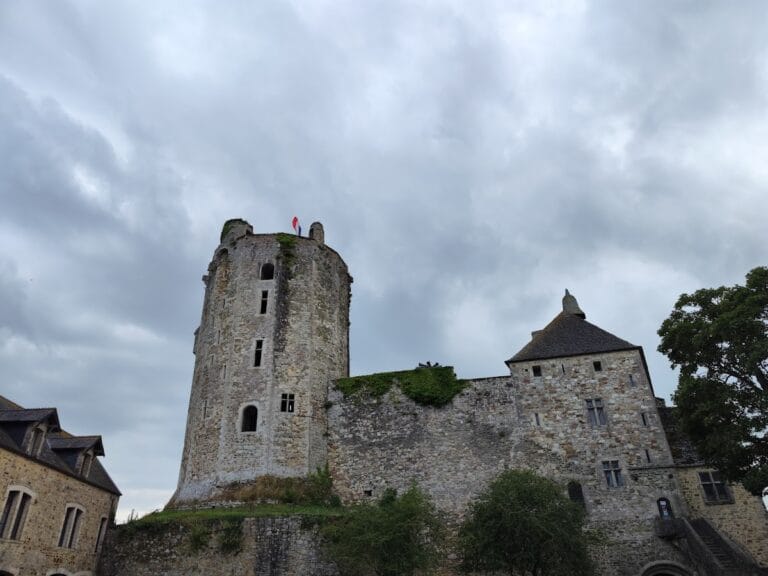Château de Regnéville: A Historic Norman Castle in France
Visitor Information
Google Rating: 4.3
Popularity: Low
Google Maps: View on Google Maps
Country: France
Civilization: Medieval European
Remains: Military
History
The Château de Regnéville is situated in the municipality of Regnéville-sur-Mer in France. Built by the Normans, its origins date back to the 12th century, although the location may have been occupied since the 9th century during early Norman incursions.
The initial construction likely began under Henry I Beauclerc, with the castle documented as early as 1141. Throughout the Middle Ages, it served as a strategic fortress safeguarding the important dry harbour of Regnéville-sur-Mer along the Cotentin Peninsula. Control of the site remained with the Dukes of Normandy and English monarchs, including King John, known as John Lackland, who protected English merchants and facilitated trade fairs nearby. Following the annexation of Normandy by King Philip Augustus of France in 1204, the castle continued to function as royal property because of its strategic location.
In 1336, ownership passed to the Kingdom of Navarre through dynastic marriage, notably to Charles the Bad, the Navarrese king. Around this period, the castle underwent significant reconstruction, using stone taken from the dismantled Château de Montchaton, likely to strengthen its defenses. The fortress became a contested site during the Hundred Years’ War, alternating between Navarrese, French, and English control. French forces captured it in 1378, only for the Navarrese to regain it in 1380, before it was definitively integrated into the French crown in 1404.
The castle endured English occupation once again from 1418 until 1449, garrisoned by roughly fifty soldiers. A six-day siege by French and Breton troops led to its recapture in 1449, leaving the fortress, particularly its seaward side, significantly damaged. Following these conflicts, the defensive importance of the castle diminished during the late 15th century.
During the 17th century, the château suffered storm damage and partial demolition by order of Cardinal Richelieu in 1637. Gunpowder stored within the keep exploded, causing severe destruction to the tower. After these events, the castle shifted to residential and agricultural use. It came into the possession of Isaac de Piennes, a Protestant figure involved in a conspiracy against King Louis XIII. In later centuries, the site accommodated diverse activities, including a marble sawmill in the 19th century and oyster farming ventures.
Archaeological investigations were conducted between 1991 and 1993, uncovering foundational remains of the upper courtyard. The castle was acquired by the Manche departmental council in 1989 and designated a historic monument in stages in 1989 and 1991. Restoration efforts have focused on returning the site to its late 16th-century appearance when Roulland de Gourfaleur undertook significant remodeling.
Remains
The Château de Regnéville originally presented a quadrilateral layout featuring two main courtyards: the upper courtyard (haute-cour) to the east and the lower courtyard (basse-cour) facing west toward the harbour. Archaeological excavations in the early 1990s revealed parts of the upper courtyard’s foundations, shedding light on the castle’s overall plan.
Central to the fortress was the rectangular keep, or donjon, rising approximately 20 to 30 meters high with formidable walls exceeding three meters in thickness. Positioned in the north-east corner of the upper courtyard, only two sides of this tower remain standing today. The keep contained four floors, three of which were vaulted—meaning they had arched stone ceilings that added strength. These floors connected via a spiral staircase, which was reconstructed during the 16th century and remains visible. The lowest level functioned as a cellar for storage. Modifications from the 16th century included the insertion of windows on the west and south façades, opening onto a balcony supported by large granite corbels carved in pairs.
The lower courtyard housed the royal residence attributed to Charles the Bad, along with stables and various support buildings. This area endured substantial damage during the 1449 siege and a damaging fire in the 15th century. Later restoration in the late 1500s by Roulland de Gourfaleur saw the moat repaired and the northern façade rebuilt featuring a gallery accessible by an external staircase, reflecting the period’s architectural style.
A significant defensive element was the Porte de Mer or Sea Gate, constructed in the 14th century by Robert de la Porte, bishop of Avranches and chancellor to the King of Navarre. This gateway provided direct access to the harbour through a small fortified gatehouse with a stone ground floor. The gate incorporated a series of drawbridges, with indications that the initial design may have included a double drawbridge system, separating pedestrian and vehicular passage. Remains of the original gate’s masonry still survive, offering insight into its historic construction.
The castle’s fortifications featured continuous wall-walks known as chemins de ronde, which allowed defenders to patrol along the curtain walls. These were especially important given the relatively small garrison tasked with defending the site—usually comprising five to six men-at-arms and fifteen archers or crossbowmen, led by a captain.
Destruction from the 1637 explosion left a large masonry block hurled from the keep, which struck and damaged a nearby cemetery wall. This blast split the tower structurally along the line of the spiral staircase.
Today, the ruins are protected as historic monuments, with the lower courtyard and its grounds listed since 1989, and the keep alongside upper courtyard ruins classified since 1991. Current restoration work aims to honor the castle’s late 16th-century form, preserving the visible remains and archaeological discoveries for future study and conservation.










